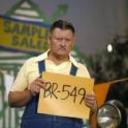Yahoo Answers is shutting down on May 4th, 2021 (Eastern Time) and beginning April 20th, 2021 (Eastern Time) the Yahoo Answers website will be in read-only mode. There will be no changes to other Yahoo properties or services, or your Yahoo account. You can find more information about the Yahoo Answers shutdown and how to download your data on this help page.
Trending News
17 Answers
- Anonymous4 years ago
Hi as there could be many reasons given vandals put things on the rails to cause it to happen.
- Old Man DirtLv 74 years ago
It takes at some where in the area of 2 1/2 miles to stop a train (100 cars traveling at 50 mph). If the cause of the derailment could be easily identified at that distance- the locomotive engineer could be at fault.
Clearly the distance a locomotive engineer can see the track for (well enough to spot where a derailment would take place) is short of that.
So it falls back on the railroad.
When such things happen an investigation takes place. If some one messed with the tracks, it becomes a federal crime. The person or persons can be held liable for damages even thought the railroad was insured.
- Samurai HogheadLv 74 years ago
Andy is 100% correct and a perfect example of the process of post accident investigation. Go for the engineer first.
The engineer bears the burden of handling the train properly including response to emergency situations. That is why the train handling story, developed from immediate post derailment interview (interrogation?) beginning miles before the derailment site, is a crucial part of an accident investigation and rightly so, including all of the sophisticated event recorder data available today. Where employed by a carrier, as not all do, it'll hang you or clear you.
However, most derailments are not due to engineer error. But everyone tries to hang them anyway, just like in the case of the Miracle on the Hudson with Captain Sullenburger at the yolk of a mortally wounded aircraft. Interested post accident parties tried to scapegoat him for decisions he made, primary of which was his decision not to try and return to an airport, but experience prevailed in his decision making and it probably saved hundreds of additional lives on the ground as well as the lives of the people aboard the doomed plane..
A locomotive engineer makes 100's of decisions, nonstop, for the entire trip, mile after mile. There is no cruise control, auto pilot or even any trim tabs. Totally hands on at all times when out and running, decision after decision. It is not just a matter of moving this lever or that. It's damn complicated. And it is an awesome responsibility whether in freight or passenger service. In both instances the specter of death and destruction looms large and is squarely in the engineer's lap to avoid it.
A further truth here is whenever it comes time to negotiate terms between railroad union represented employees and common carriers via any collective bargaining agreements, the engineer is considered "unskilled labor." True.
On the other hand, the moment any pickets go up in a legal strike after proper protocol is met, ie serving a Section 6, a Federal Judge immediately rubber stamps an injunction citing these very same railroaders as "vital to the economy and security of the nation," with a back to work order as an automatic result.
Of course there are those who would do away with labor unions of all kinds. Just like Benito Mussolini, Adolf Hitler and the Communist Party.
Unfortunately human error on the part of the engineer or motorman is a cause for derailment and destruction in some instances as contemporary history has made abundantly clear. Selection and training varies and isn't fool proof.
Somewhere out there, there is a doctor practicing medicine who juuuuust squeaked by final exams, residency and barely made it into practice. There is an engineer out there that fits this paradigm as well. But as with physicians, these people are few and far between, but they're out there roaming the rails just the same. A sad fact.
But in the strictest interpretation the carrier is responsible initially for financial damages, especially if due to operating practices, and if it is developed that a specific car created the derailment, then the owner of that car is hung out big time whether privately owned or a corporation's asset now become a huge liability.
As for causes of derailment; broken wheel, broken rail, failed draft gear, burnt off journal, wide track gage, excessive speed, improper train make up, collision (with another train or a vehicle) sun kinks, sub-standard road bed, washout, skeleton track, cradle effect, wheel lift, thin flange, air brake problems, jack knifing, string lining, rock or land slides, excessive tonnage, communications break down, flat spots creating thermal cracks, improper maintenance on equipment, signal malfunction, trainman error (conductor or brakeman) dispatcher error and yes, engineer error as well, the latter usually precipitated by insufficient training and/or lack of experience, now that drug or alcohol problems are no longer concerns or contributors, they having gone the way of the dodo since the inception of U/A testing that began in1984. I can't even guess how much money that saved me over time, being an old head SP mutt... And mutts we were... If you weren't one, you'll never understand. But we've all known about derailments and their causes because all of us were trained in them and, most importantly, we were schooled in preventing them to the highest degree as possible.
For many current carriers, these days lessons in fuel conservation is paramount and to hell with the rest of it. By way of example, UP doesn't care if they have a $450 million derailment. They will make it all back in the next fiscal quarter with a tidy tax deduction of the same amount to boot. But all of the dead will remain dead, merely habitat, animal or human collateral damage as a result and in the wake of doing business as usual.
There's probably a few others I've not remembered, which is normal for me, since every time I get to the kitchen across the room I can't remember what the hell I went there for...
Bottom line is, none of us on the right hand side of the engine in direction of travel are just putting along down the tracks when you see us. We're handling the train and sometimes it's a real *****, straight up....
Once someone on a moonless night has stuffed a 9,000 ton train, 5,700 feet long into a 5,850 foot siding on a 2.4% grade, with heavy curvature in snow and rain or heavy fog, then they can speak with authority on the subject. If well trained that person will never cause a derailment via human error.
But having brass balls really helps... It gets hairy a lot of times, even in broad daylight...
Source(s): SP Sacramento and Oregon Division Hoghead & Road Foreman of Engines - How do you think about the answers? You can sign in to vote the answer.
- Anonymous4 years ago
It just differs for each and every situation.
- Anonymous4 years ago
Politicians
- AndyLv 74 years ago
Well, they always try to blame the engineer, but it really boils down to what the cause was.
Edit I had a derailment on the hottest train we had on the railroad one night. Ford auto parts for a Mexico plant. Basically the whole train went in the ditch except the lead unit and the rear stack pack. It cost a fortune because the plant had to shut down and it was guaranteed on time delivery. They wanted to blame me for that but it was a rail that broke when the lead unit went over it. I was doing everything I was supposed to be doing so they couldn't touch me.
Source(s): UPRR engineer - br549Lv 74 years ago
Well, the libs will blame Trump,
Trump will blame Hillary,
Hillary will blame the Russians,
but I will just say "Thanks Obama!"
Responsible for what? Clean-up? Cost? Blame? There is no possible way that vague of a question can be answered.
- 4 years ago
That depends on the cause of the derailment. Speed, maintenance, construction.







